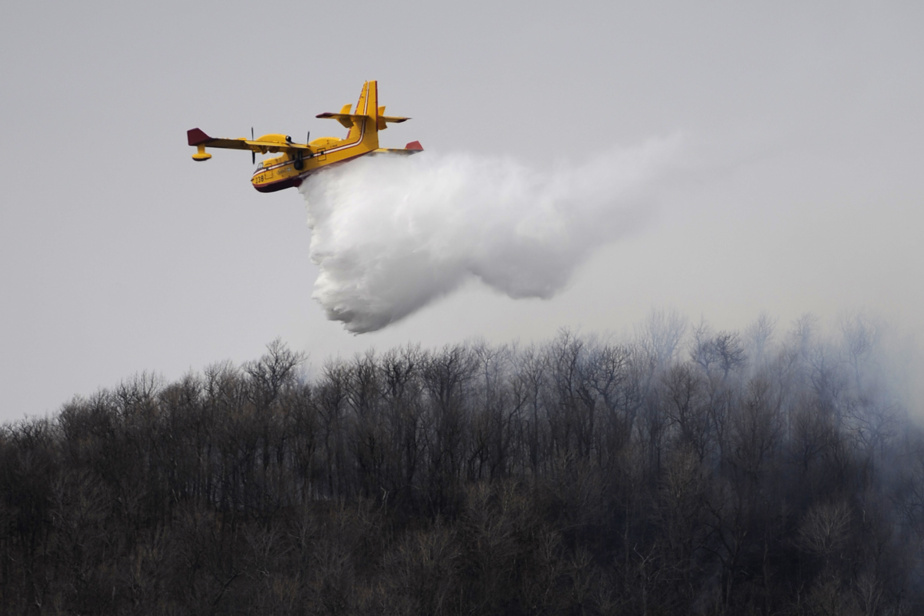(Montreal) If the next wildfire seasons are like 2023, the provinces may need more air tankers like the Canadairs CL-215 and CL-415. But Canada hasn’t built these devices since 2015 and experts lament a loss of expertise at a time when demand is growing both in Canada and abroad.
Last Monday, air tankers from Montana were deployed to Quebec to lend a hand to the firefighters and to the fifteen air tankers that the province has.
At a press conference on Tuesday morning, federal Public Safety Minister Bill Blair explained that the six American tanker planes had recently been loaned to Nova Scotia, but on Monday, “smoke and rain made it impossible to water bombing in Nova Scotia, so those planes were redeployed to Quebec for the day”.
Minister Blair believes that the provinces have enough equipment, such as air tankers, to fight the fires that are raging in several parts of the country.
However, he indicated Tuesday morning that Ottawa “will certainly seek to acquire additional equipment if necessary”, by appealing to another country.
“But we need to know where it is and how we can access it very quickly,” the minister explained.
Finding air tankers quickly can be tricky, especially when allied nations are also battling wildfires.
“The northern hemisphere is in fire season,” so “we would have a hard time finding a country that could lend us aircraft,” said John Gradek, aviation expert and lecturer at McGill University.
Mr. Gradek believes that the provinces lacked vision and should have invested more in the purchase of air tankers.
“In Canada, we have 55 Canadairs aircraft, a combination of CL-215 and CL-415” and “considering the number of fires currently in the country, it is absolutely insufficient”, indicated Mr. Gradek, specifying that the acquisition of this type of equipment is under provincial jurisdiction. He said some of the devices used in the country were built 50 years ago.
“We no longer manufacture these aircraft in Canada”, so “we try to modify them, maintain and update the components of these aircraft”.
During a press conference earlier this week, Prime Minister François Legault alluded to the difficulty of maintaining some of these devices when a journalist asked him about the equipment needed to adapt to climate change.
“When you see a CL-215 that you can’t use for maintenance, you have to ask yourself questions about: do we need more mechanics? The answer is probably yes. Do we have to buy some additional new devices? I think that’s more how it should be looked at, ”said the Prime Minister without however specifying whether his government intends to buy new planes.
No Canadian aircraft before 2030
In 2016, Bombardier sold its air tanker program to British Columbia-based Viking Air. According to John Gradek, this company, which plans to build a factory in the west of the country, could start building its first air tankers in 2027, but these are unlikely to be used to put out forest fires in Canada.
“The company will have a production capacity of 10 aircraft per year” and “the first 25 aircraft” are intended for Indonesia, France, Spain and other European countries, explained the aviation expert.
So if a Canadian province ordered a device today, “its production would not begin before 2030,” said Mr. Gradek.
He added that the “Europeans want the new generation of Canadair CL-415 and are ready to make major purchases” to acquire these future Canadian aircraft, because the first generation is “a high performance aircraft, recognized and which has made its evidence around the world.
If the 2023 fire season is the prelude to what the future holds due to climate change, countries will increasingly need this type of device, underlined John Gradek who would like the federal government to invest in Viking Air.
“Not only for it to begin production of the CL-415, but also to increase the production capacity it plans. »
Mehran Ebrahimi, director of the Observatory of Aeronautics and Civil Aviation and professor at the School of Management Sciences of the University of Quebec in Montreal, is sorry for the loss of expertise from Canada and particularly Quebec since the end of production of the Canadair CL-415 and CL-215 aircraft by Bombardier.
“We have seen the effects of climate change around the world, so we could have put ourselves in a position not only to produce, but also to maintain strategically, to preserve our ability to build these planes that require particular expertise,” he said.
Referring to Prime Minister Legault’s comment that a CL-215 aircraft was not used for “maintenance matters”, Professor Ebrahimi added: “These are the planes we produced and we can’t we fix them? What happened there? Expertise, where has it gone in the meantime? “.
